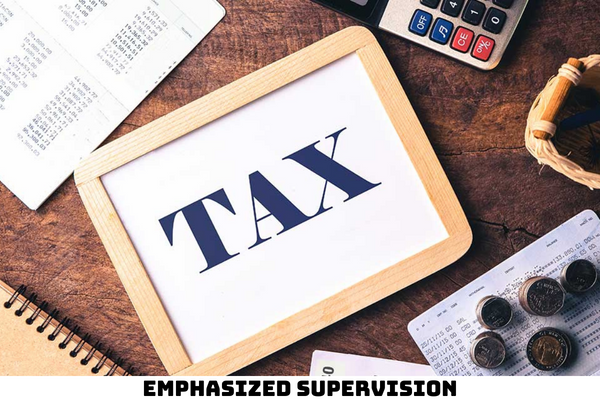Vietnam: In what cases will taxpayers be kept under the emphasized supervision? What are the contents of inspection and assessment in tax administration in Vietnam?
- In what cases will taxpayers in Vietnam be kept under the emphasized supervision?
- What are the methods of inspecting and assessing the application of risk management to tax administration in Vietnam?
- What are the contents of supervision and assessment of plans for improving compliance with tax laws in Vietnam?
In what cases will taxpayers in Vietnam be kept under the emphasized supervision?
Pursuant to Clause 1, Article 22 of Circular 31/2021/TT-BTC as follows:
Emphasized supervision of taxpayers showing signs of violations against tax laws
1. Taxpayers shall be kept under the emphasized supervision if they have one of the following signs:
a) Their bank transactions show suspicious signs in accordance with regulations of the Law on anti-money laundering in terms of tax evasion and tax fraud.
b) They or their legal representatives are under investigation for their violations related to taxes, invoices and evidencing records.
c) They have signs of high tax risks to the extent of being classified as subjects of emphasized supervision or need to be kept under tax supervision through information collected for tax authorities' administration.
d) They are selected from the list of taxpayers that are non-compliant as prescribed in Article 10, the list of very high-risk and high-risk taxpayers as prescribed in Clause 1 Article 11 hereof and those failing to provide explanation and additional information or those providing explanation and additional information but they are inadequate or are submitted after the prescribed deadline stated in written notices of tax authorities.
2. Tax authorities at all levels shall monitor, supervise and apply tax administration measures appropriate for each case specified in Clause 1 of this Article.
3. The General Department of Taxation shall provide specific provisions on collection and analysis of information, and determination of subjects of emphasized supervision and supervisory methods in conformity with regulations of law in each period.
Thus, taxpayers shall be kept under the emphasized supervision if they have one of the following signs:
- Their bank transactions show suspicious signs in accordance with regulations of the Law on anti-money laundering in terms of tax evasion and tax fraud.
- They or their legal representatives are under investigation for their violations related to taxes, invoices and evidencing records.
- They have signs of high tax risks to the extent of being classified as subjects of emphasized supervision or need to be kept under tax supervision through information collected for tax authorities' administration.
- They are selected from the list of taxpayers that are non-compliant, the list of very high-risk and high-risk taxpayers and those failing to provide explanation and additional information or those providing explanation and additional information but they are inadequate or are submitted after the prescribed deadline stated in written notices of tax authorities.

What are the methods of inspecting and assessing the application of risk management to tax administration in Vietnam?
Pursuant to Clause 2, Article 23 of Circular 31/2021/TT-BTC stipulating as follows:
Article 23. Inspection and assessment of application of risk management to tax administration
...
2. Inspection and assessment methods:
a) Consolidate reporting information and figures of tax authorities at all levels, departments and units affiliated to the General Department of Taxation during the application of risk management;
b) Collect, analyze and consolidate results of application of risk management in tax administration operations;
c) Establish inspection teams to inspect the implementation and application of risk management by tax authorities at all levels.
Thus, according to the above provisions, the methods of inspecting and assessing application of risk management to tax administration in Vietnam are:
- Consolidate reporting information and figures of tax authorities at all levels, departments and units affiliated to the General Department of Taxation during the application of risk management;
- Collect, analyze and consolidate results of the application of risk management in tax administration operations;
- Establish inspection teams to inspect the implementation and application of risk management by tax authorities at all levels.
What are the contents of supervision and assessment of plans for improving compliance with tax laws in Vietnam?
Pursuant to Clause 1, Article 24 of Circular 31/2021/TT-BTC as follows:
Supervision and assessment of plans for improving compliance
1. Carry out supervision and assessment of the following contents:
a) The implementation of the plan for improving compliance;
b) Outcomes and efficiency of the plan for improving compliance. To be specific:
b.1) Validity and efficiency of treatment measures adopted by tax authorities based on risk identification and analysis according to each segment of taxpayers;
b.2) Actual results and expected results of measures for minimizing risks through compliance measurement.
c) The application of transparency process to development and implementation of the plan for improving compliance;
d) Improvement of overall compliance of different groups of taxpayers and tax obligations;
dd) Organizational structure and human resources of tax authorities at all levels for implementing the plan which must ensure the validity and efficiency of the plan according to the plan’s objectives.
Thus, supervision and assessment of plans for improving compliance with tax laws in Vietnam include the following contents:
- The implementation of the plan for improving compliance;
- Outcomes and efficiency of the plan for improving compliance. To be specific:
+ Validity and efficiency of treatment measures adopted by tax authorities based on risk identification and analysis according to each segment of taxpayers;
+ Actual results and expected results of measures for minimizing risks through compliance measurement.
- The application of transparency process to development and implementation of the plan for improving compliance;
- Improvement of overall compliance of different groups of taxpayers and tax obligations;
- Organizational structure and human resources of tax authorities at all levels for implementing the plan which must ensure the validity and efficiency of the plan according to the plan’s objective.
LawNet
